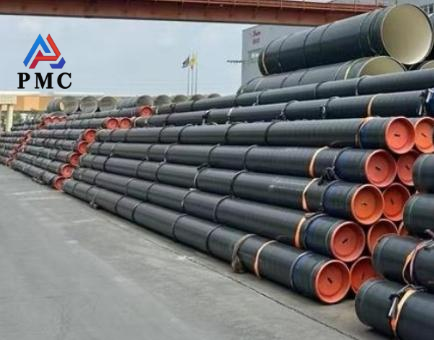
Standard Wall Thickness of Seamless Carbon Steel Pipe
Importance of seamless carbon steel pipe
Seamless carbon steel pipe, as a key material in the industrial and construction fields, has shown its irreplaceable importance with its excellent performance and wide application. In the transportation of oil and natural gas, it ensures stable energy transmission with its high strength and excellent pressure bearing capacity, regardless of complex geological conditions and high-pressure environments. In building structures, whether it is a towering skyscraper or a majestic bridge, seamless carbon steel pipes can provide stable support to ensure the safety and long-term use of the building. In addition, seamless carbon steel pipes also play an indispensable role in many industries such as machinery manufacturing and chemical industry. Its standard wall thickness, as a key factor affecting performance and application, is worth in-depth exploration.
Unique advantages of seamless carbon steel pipes compared to seamless pipes
1. Significant cost advantage: Carbon steel pipes are mainly based on iron and carbon, with few alloy elements added. The smelting and production processes are relatively simple. Compared with stainless steel or alloy seamless pipes, their raw material costs and manufacturing costs are lower, and they have outstanding advantages in large-scale infrastructure projects that are sensitive to costs.
2. Good processing performance: Seamless carbon steel pipes have moderate hardness and are easy to cut, weld, bend and drill. They do not require special equipment or processes, can greatly improve construction efficiency, reduce processing difficulty and cost, and are suitable for fast construction projects.
3. Wide range of applicable scenarios: In general industry, building water supply and drainage, general machinery manufacturing and other fields that do not require high corrosion resistance and high temperature resistance, seamless carbon steel pipes can fully meet the use requirements with sufficient strength and toughness, and have a wide range of applications.

Standard wall thickness range and influencing factors
In the national standard, the wall thickness of common seamless carbon steel pipes usually ranges from 0.15 to 2.5 mm, but in actual applications, the wall thickness will vary depending on many factors.
First of all, the outer diameter of seamless carbon steel pipe has a significant impact on the wall thickness. Generally speaking, the larger the outer diameter, the greater the wall thickness needs to be to ensure the strength and stability of the pipe. For example, the wall thickness of a large-diameter oil pipeline will be thicker than that of a small-diameter precision instrument pipe.
Material is one of the key factors affecting wall thickness. Seamless carbon steel pipes of different materials have different mechanical and chemical properties, and their applicable wall thickness ranges are also different. For example, 20# steel and 16Mn steel, 16Mn steel has higher strength, so in the same usage scenario, the wall thickness may be relatively thinner to meet the requirements.
Different usage scenarios have different requirements for the wall thickness of seamless carbon steel pipes. In the field of petrochemicals, when transporting high-temperature, high-pressure, and highly corrosive media, thicker wall seamless carbon steel pipes are required to ensure safety; while in building structures, the wall thickness requirements for seamless carbon steel pipes used as ordinary supports are relatively less stringent.
Pressure and temperature cannot be ignored either. When the pressure and temperature in the pipeline increase, the load on the seamless carbon steel pipe increases. At this time, it is necessary to increase the wall thickness to improve the pressure bearing and heat resistance to ensure the stable operation of the pipeline system.
Wall thickness indication method
In the relevant standards for seamless carbon steel pipes, there are many ways to express the wall thickness. The most common method is to use the pipe schedule (Sch). For the wall thickness of carbon steel pipes, there are 10 grades, including Sch10, 20, 30, 40, 60, 80, 100, 120, 140, and 160. This is the value obtained by multiplying the ratio of the pipe design pressure to the allowable stress of the material at the design temperature by 1000 and rounding it off. For example, in some petrochemical pipelines, seamless carbon steel pipes with appropriate Sch values are selected based on different design pressure and temperature conditions.
It can also be directly expressed by the steel pipe wall thickness, that is, "pipe outer diameter × wall thickness", such as the common φ89×4, which means a seamless carbon steel pipe with an outer diameter of 89 mm and a wall thickness of 4 mm. This method is concise and clear and is widely used in actual production and use.
It can also be expressed by pipe weight, which is divided into standard weight pipe (STD), thickened pipe (XS), and extra thick pipe (XXS). For pipes with DN≤250mm, Sch40 is equivalent to STD; for pipes with DN<200mm, Sch80 is equivalent to XS. In building structures, when the strength requirements for seamless carbon steel pipes are not high, standard weight pipes may be selected; in some high-pressure and high-corrosion environments, thickened pipes or extra thick pipes are required to ensure safety.
Conclusion
The standard wall thickness of seamless carbon steel pipes is affected by many factors and has different representation methods and data. In practical applications, it is necessary to accurately select seamless carbon steel pipes with appropriate wall thickness based on specific usage requirements, working environment and relevant standards and specifications. This can not only ensure the safe and stable operation of the pipeline system, but also effectively control costs and avoid safety hazards or waste of resources caused by improper wall thickness selection.
Read more: Density of Seamless Carbon Steel Pipe and Its Importance


